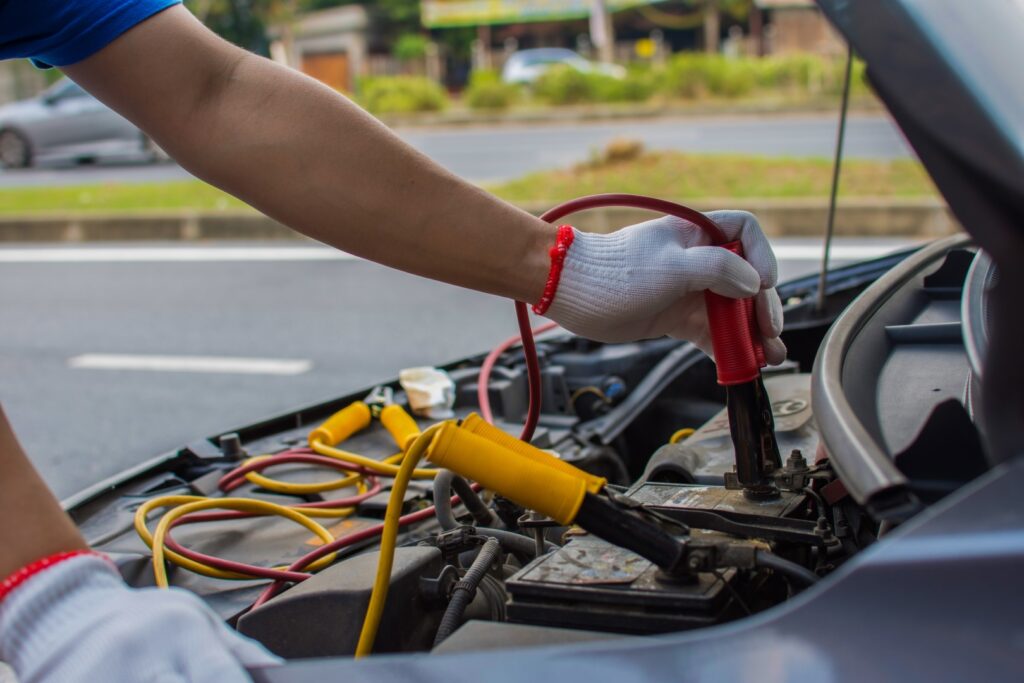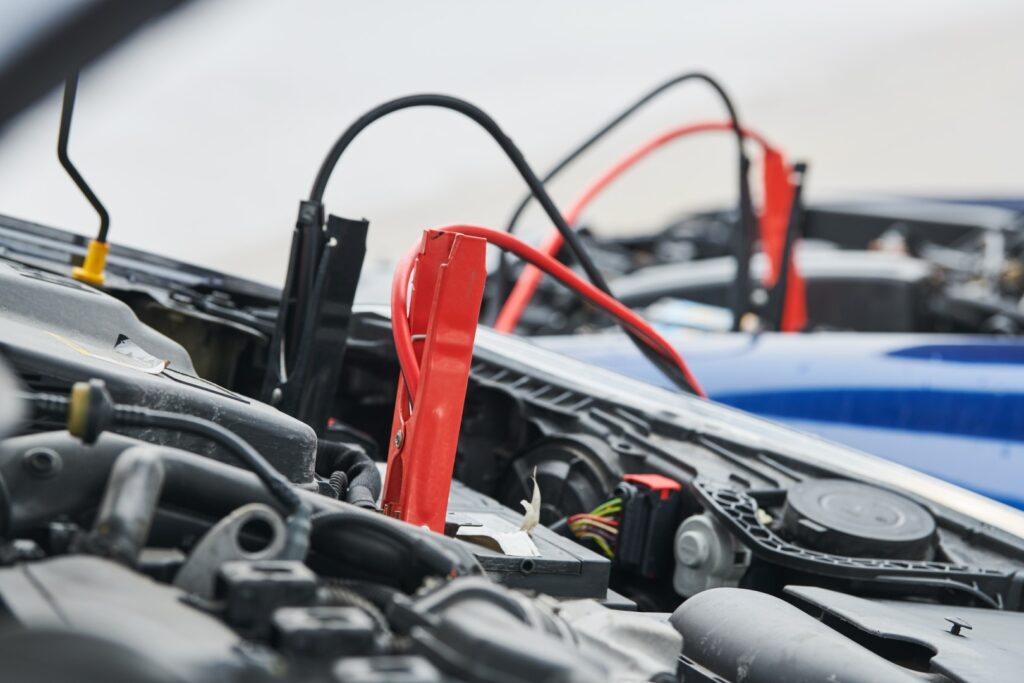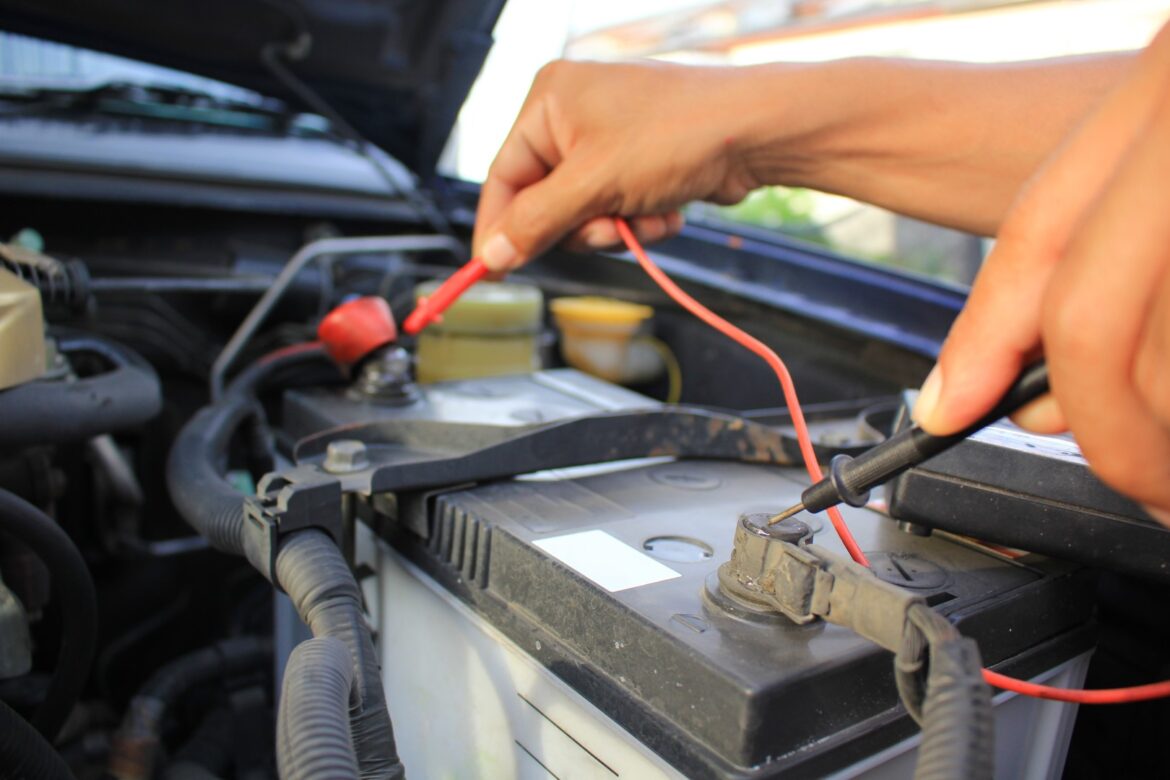When you are out on a date and forget to turn off the lights, you are left stranded with a car that will not leave the parking lot.
There can be few things worse than finding your car’s battery dead when you arrive late for work. These kinds of situations can happen to anyone at any time, and the only way to get out of them is to know how to jump-start a car.
There may be a variety of reasons why your car won’t start, but the majority of the time, you’ll find that the battery has run out due to something that kept using up battery power when it shouldn’t.

A useful tool for starting a car with a dead battery is a jump start. However, improper use of jump leads can result in harm to vehicles and people.
Jumper cables, also known as booster cables, are necessary for jump-starting a vehicle to connect a dead battery to a fully charged battery in another vehicle. A good set of cables and other roadside emergency supplies should be kept in the trunk of your car.
The most effective method to Supplant a Drained Battery in a Vehicle
1. Set the Booster Car in Place.
First, park a car that has a full battery close to a car that has a dead battery. The vehicles can be facing each other or side by side. For the jumper cables to reach the batteries, they need to be close enough together.
Take the keys out of both cars and turn off the ignition. In both vehicles, activate the emergency brake. Turn off the radio, lights, and climate control as well as all other accessories.
2. Find Battery Terminals
To gain access to the batteries, raise the cars’ hoods. Positive (+) and negative (-) terminals are present in a car battery. To make it easier to jump the battery or give it a boost, the battery terminals may sometimes be hidden behind metal posts. A red cap frequently identifies the positive terminal. If you need to know where the terminals are, check the manual for your vehicle.
Corrosion should not be a problem at the terminals. Use a wire brush, aluminum foil, or something else besides your bare hand to remove any white or greenish substance that appears to have coated the posts. Your skin may be irritated by the corrosion.
If the battery is cracked or leaking, do not attempt to jump it.

3. Connect Jumper Cables
Each end of a jumper cable has a pair of red and black spring-loaded clamps. The positive battery terminals are secured by red clamps; Black clamps are used for grounding or negative posts. The four clamps must be connected securely and in the right order. A bad connection can hurt someone or harm the electrical system of a car.
4. Jump-Start the Car
Twofold checked that the associated sponsor links aren’t close to moving motor parts. Start the engine of the vehicle that is providing the power.
The car should then be started with a dead battery. If the engine doesn’t start right away, you might have to wait a few minutes for the battery to charge up enough. The booster vehicle’s idle speed could be increased to speed up this process.
5. Disconnect Jumper Cables
Disconnect the jumper cables in the opposite order that they were attached while the engine of the car that was jump-started is running smoothly at idle. When connecting and disconnecting the metal clamps from the battery terminals, they should never come into contact with one another.
Remove the jump car from the negative clamp.
Next, remove the booster car’s negative clamp.
After that, detach the booster car’s positive clamp from it.
Finally, disconnect the positive clamp from the jumped vehicle and remove it.
6. Drive the Jumped car
Close the car’s hood and return the emergency cables to your emergency kit. After that, drive the car after it has been restarted for at least 20 minutes to let the alternator charge the dead battery.
When you turn off the engine, park the vehicle in a clear area in a safe location in case it needs to be restarted. The battery’s condition may be deteriorating if it requires another jump, particularly if it is older than a few years.
A diagnostic check on the car battery can be performed by many stores that sell batteries to determine whether it requires replacement.

